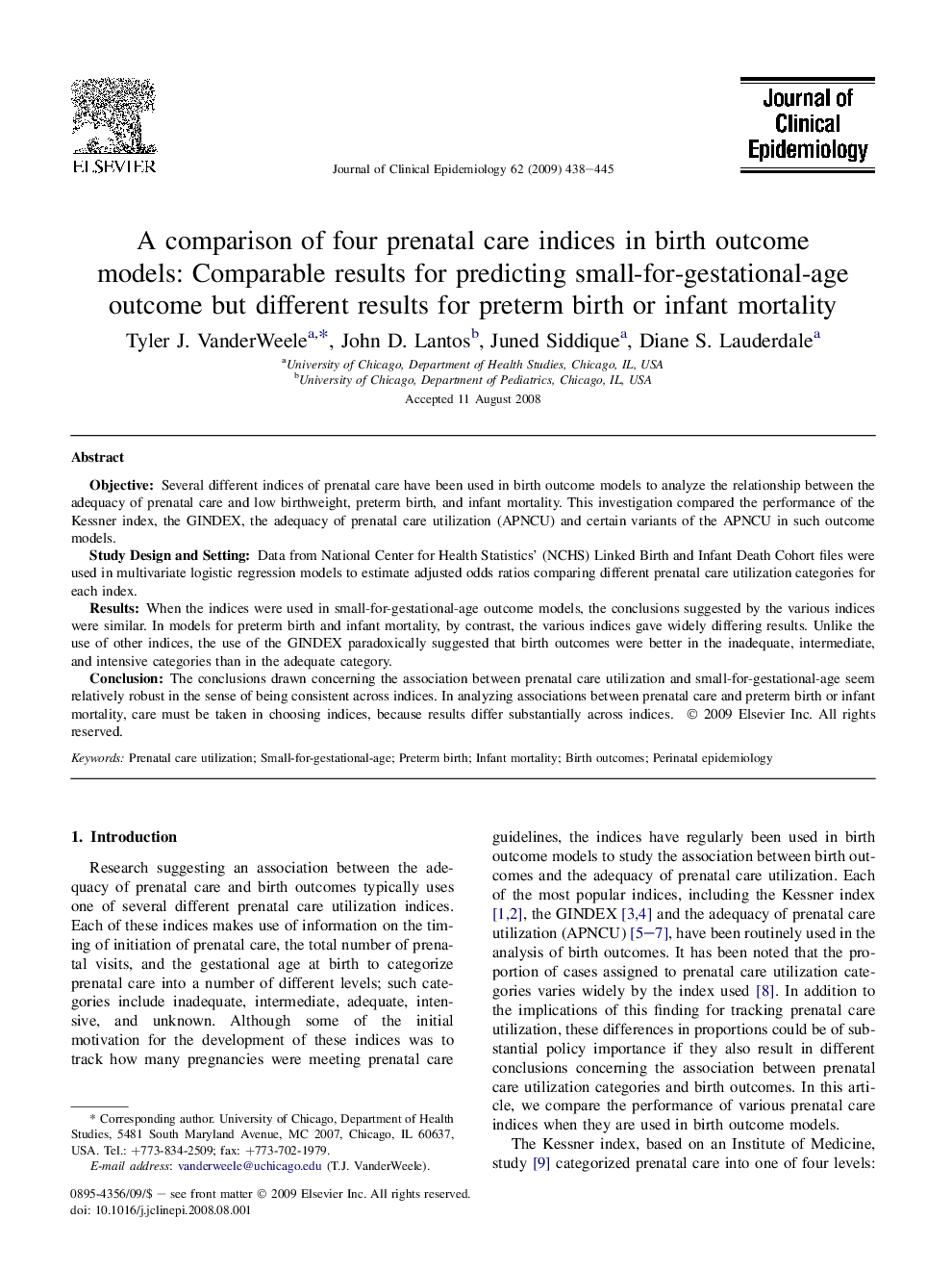| Article ID | Journal | Published Year | Pages | File Type |
|---|---|---|---|---|
| 1083507 | Journal of Clinical Epidemiology | 2009 | 8 Pages |
ObjectiveSeveral different indices of prenatal care have been used in birth outcome models to analyze the relationship between the adequacy of prenatal care and low birthweight, preterm birth, and infant mortality. This investigation compared the performance of the Kessner index, the GINDEX, the adequacy of prenatal care utilization (APNCU) and certain variants of the APNCU in such outcome models.Study Design and SettingData from National Center for Health Statistics' (NCHS) Linked Birth and Infant Death Cohort files were used in multivariate logistic regression models to estimate adjusted odds ratios comparing different prenatal care utilization categories for each index.ResultsWhen the indices were used in small-for-gestational-age outcome models, the conclusions suggested by the various indices were similar. In models for preterm birth and infant mortality, by contrast, the various indices gave widely differing results. Unlike the use of other indices, the use of the GINDEX paradoxically suggested that birth outcomes were better in the inadequate, intermediate, and intensive categories than in the adequate category.ConclusionThe conclusions drawn concerning the association between prenatal care utilization and small-for-gestational-age seem relatively robust in the sense of being consistent across indices. In analyzing associations between prenatal care and preterm birth or infant mortality, care must be taken in choosing indices, because results differ substantially across indices.
